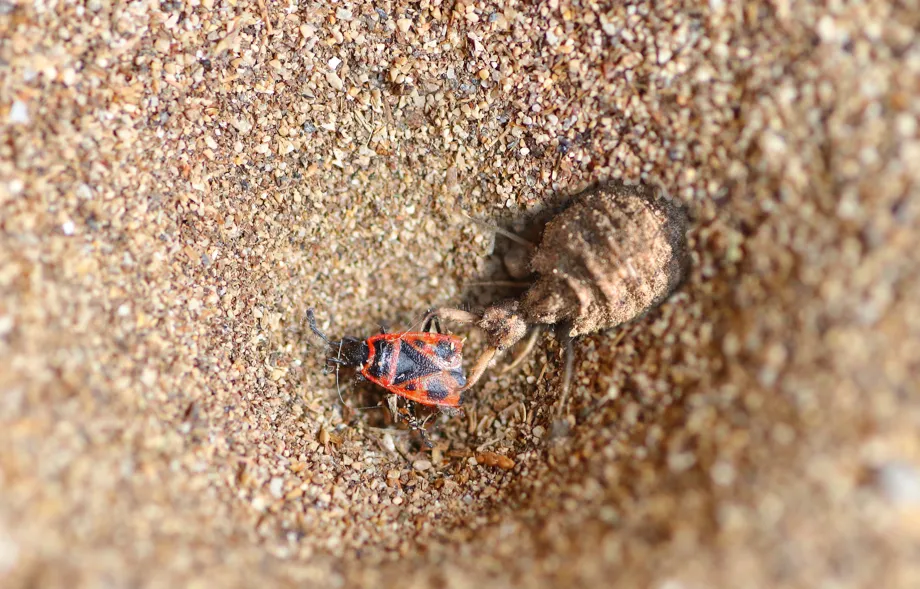Animals have long been observed faking death in a desperate attempt to avoid predators but scientists say the length of time is kept long but unpredictable.
This tense strategy creates a deadly game of hide and seek, as the grumbling stomachs of predators cannot afford to wait around forever, and their prey also need to get on with their lives at some point.
Charles Darwin recorded a beetle that kept completely still for 23 minutes, but the University of Bristol has observed an antlion larvae insect that pretended to be dead for as long as 61 minutes.
The study, published in the Biology Letters journal, analysed the benefits of death-feigning when a predator eyes up small populations of conspicuous prey.
More tactical prey and predator antics:
- Shocking behaviour: Electric eels team-up to zap their prey
- 99-million-year-old fight between ‘hell ant’ and its prey preserved in amber
- Barn owls' bright white plumage used for startling prey
Lead author Professor Nigel R Franks and his team used the marginal value theorem to consider how the antlion's act would impact its hungry predator.
“Imagine you are in a garden full of identical soft fruit bushes," said Franks. "You go to the first bush, [where] collecting and consuming fruit is fast and easy.
"But as you strip the bush, finding more fruit gets harder and harder and more time-consuming. At some stage, you should decide to go to another bush and begin again."
Assuming you, the predator, are greedy, you will want to eat as much fruit as you can, as quickly as is possible. Should you continue with the same bush until all the fruit has gone, or should you move onto another bush, losing foraging time but perhaps getting to more fruit faster?
"The marginal value theorem would tell you how long to spend at each bush given that time will also be lost moving to the next bush," explains Franks. “We used this approach to consider a small bird visiting patches of conspicuous antlion pits.

"[We] show that antlion larvae that waste some of the predator’s time, by ‘playing dead’ if they are dropped, change the game significantly. In a sense, they encourage the predator to search elsewhere.
“Thus, playing dead is rather like a conjuring trick. Magicians distract an audience from seeing their sleights of hand by encouraging them to look elsewhere.
“Just so with the antlion larvae playing dead – the predator looks elsewhere. Playing dead seems to be a very good way to stay alive.”
Reader Q&A: Can a cockroach really live without its head?
Asked by:Amir Montazer, Iran
Decapitation is almost immediately fatal to humans because we have a high-pressure circulatory system that we depend on to keep our tissues oxygenated. Cutting the carotid arteries in your neck would cause you to bleed out completely in a few minutes. Even if the cuts were immediately cauterised, your body can’t survive without nerve signals from the brain telling you to breathe.
But cockroaches, like most insects, are different. They breathe passively through a network of pipes connected to holes called spiracles along the length of their body. They don’t rely on blood circulation to move oxygen around and their body fluids are at a much lower pressure anyway. Their brain mostly handles the sensory input from the eyes and antennae, with many other behaviours, like running and reacting to touch, handled by ‘mini brains’ called ganglia in each body segment. A decapitated cockroach will eventually starve to death but this can still take several weeks.
Read more:
